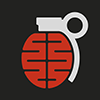Part 1: "Ukroboronprom"
The war has been ongoing for three years. Despite the heavy losses, destruction, and hard lessons the country should have learned, the biggest crimes against national defense remain unnoticed or deliberately ignored.
Corruption and betrayal in defense procurement are nothing new for Ukraine, but the most cynical crimes occurred when the country was already on the brink of full-scale war. The individuals responsible for these deals have not only avoided punishment but continue to hold high-ranking positions and shape defense policy.
Troll 🧌 is launching a series of publications exposing state procurement betrayals that have directly impacted Ukraine’s ability to resist aggression. The first case—"Ukroboronprom."
How "Ukroboronprom" Exposed Defense Procurements to Public Access
In 2019, when Aivaras Abromavičius was appointed head of the state concern "Ukroboronprom," his team decided to move all procurement processes to the Prozorro system. Officially, this was presented as a step towards transparency and anti-corruption efforts.
However, the real consequences were devastating:
✅ All information on procurements, volumes, suppliers, delivery locations, and exact addresses of defense facilities became publicly available.
✅ Russian intelligence services gained a convenient monitoring tool that allowed them to analyze the state of Ukraine's defense industry with ease.
✅ The concern’s leadership forced 118 factory directors to disclose the full list of purchased items, pricing, contracts, and even storage locations.
As a result, enemy intelligence had a clear and detailed picture of Ukraine’s defense capabilities before the full-scale invasion.
Concrete Cases: How the Enemy Gained Critical Information
📌 Case 1: KB "Luch"
On December 22, 2021 (two months before the full-scale invasion), KB "Luch" purchased a special Schaublin lathe center with a delivery address: Kyiv, Melnykova St., 2.
This was the exact location of a facility working on missile systems. Not surprisingly, Lukianivka was one of the first areas targeted by Russian strikes.
📌 Case 2: Antonov State Enterprise
In February 2022, another shocking example surfaced. Antonov State Enterprise conducted a tender for the "flight inspection of ground-based radio-technical support and lighting equipment" at two airfields:
- Kyiv/Antonov-1 (Tupoleva St. 1, Kyiv)
- Kyiv/Antonov-2 (Hostomel, Avtodorozhna St. 1, Kyiv region)
Do we need to remind you what was happening at these airfields exactly three years ago? Russian airborne forces attempted to capture them during the first hours of the invasion.
The Cost of Open Data in Wartime
The Prozorro tenders included not only major strategic procurements but also smaller components: bolts, fuel, spare parts, special equipment. While individual data points might seem insignificant, together, they painted a complete picture of Ukraine’s defense potential.
❗ Thanks to this, Russian intelligence knew:
- What types of weapons were being produced and repaired,
- In what quantities and at what prices,
- The exact locations of military storage and production facilities.
This information remains publicly available to this day.
Why Are These Crimes Still Unpunished?
The key question is: who will be held accountable for leaking information that directly helped the enemy plan targeted strikes against Ukraine’s defense facilities?
Why are the people responsible for this not in prison but still in positions of power?
🚨 If "Ukroboronprom" leadership didn’t realize that publishing procurement data in wartime is a national security risk—this is incompetence.
🚨 If they knew but allowed it anyway—this is sabotage.
The country must know its "heroes."
To be continued…
